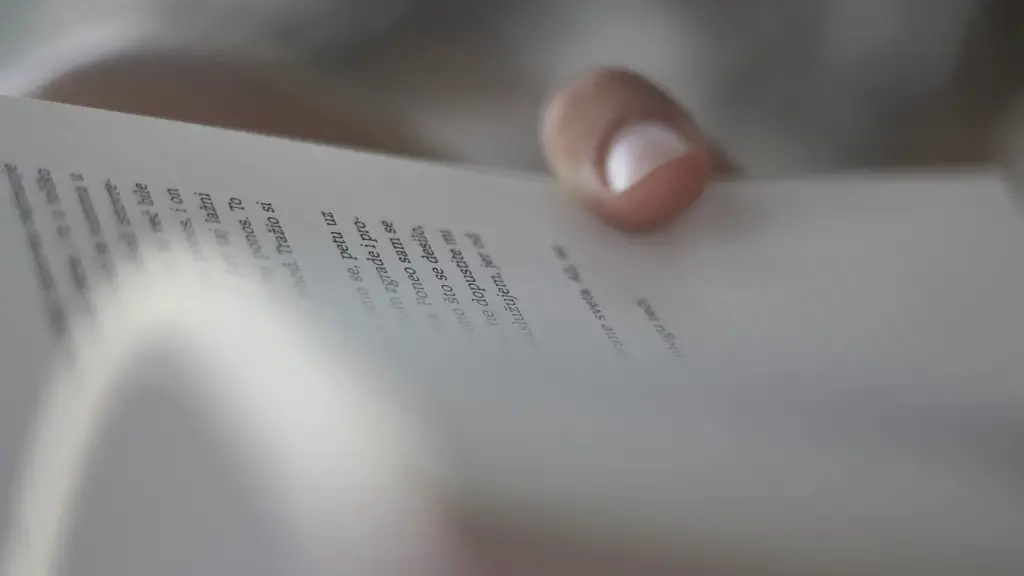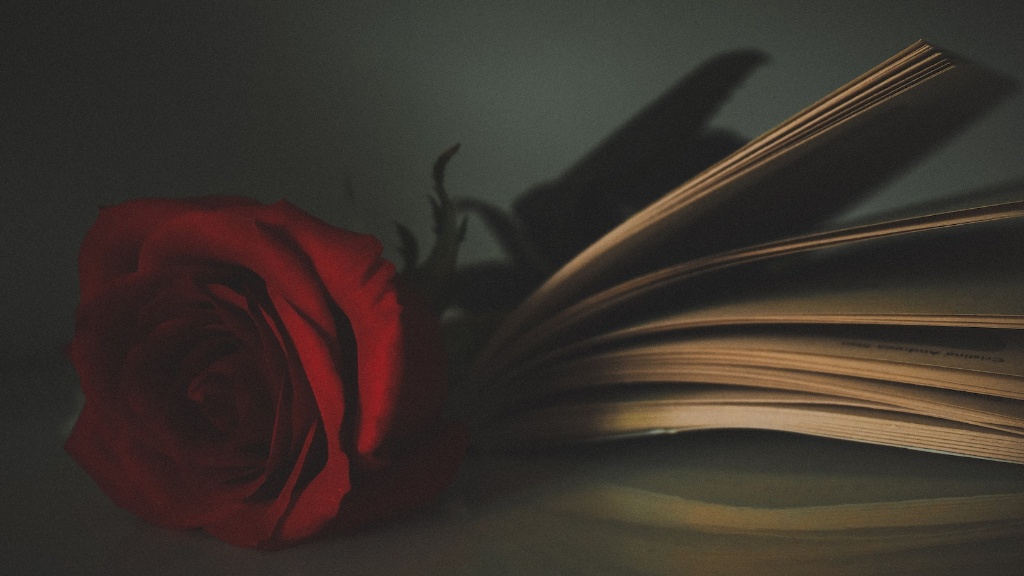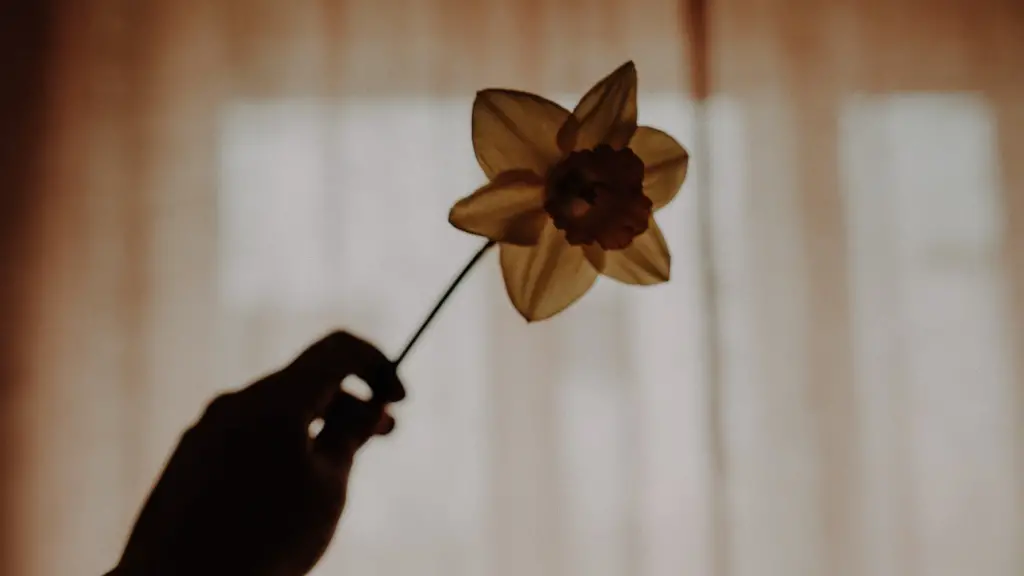Poetry is one of the most enduring and popular forms of literature. It has been around for thousands of years and still continues to be an important part of culture and expression today. Poetry comes in different forms and shapes, from traditional sonnets and limericks to free-form poetry and spoken word. These different types of poetry all have their own distinct characteristics and are used for different purposes.
Sonnets are one of the oldest and most popular forms of poetry. They usually consist of fourteen lines and follow a specific rhyme and metre pattern, with the lines either ending in the same rhyme or using a rhyme scheme. Sonnets traditionally follow the form of a love poem, conveying the feelings of two lovers and the passion between them. Shakespeare is one of the most famous poets of the sonnet form, creating pieces like “Shall I Compare Thee To A Summer’s Day?” and “My Mistress’ Eyes Are Nothing Like The Sun”.
Limericks are another popular type of lyrical poem consisting of five lines and a strict meter and rhyme scheme. They often contain humor and satire, and the best-known limericks often use a clever twist at the end. Famous examples of limericks include Edward Lear’s “There was an Old Man of Intrant” and “There Was an Old Man with a Beard”. The limerick form is now often used in kid’s rhymes as well.
Free-form poetry is a type of poetry that does not follow any particular rhyming or syntax structure. Free-form poetry is often more expressive and personal than other forms of poetry and does not have to follow any rules. It allows poets to express their feelings and emotions without having to adhere to any structure or form. Walt Whitman’s “Leaves of Grass” is one of the best-known examples of free-form poetry.
Spoken word poetry is an interesting blend of poetry and performance. In spoken word poetry, the poet uses their words and body language to convey a powerful and impactful message, often relating to a particular subject. It began as an African-American tradition in the 1950s and has since spread to become popular all over the world. Contemporary spoken word poets have used their poetry as a call to action and to express their thoughts on issues such as politics and social justice.
Haikus
Haikus are a form of traditional Japanese poetry that is typically comprised of three lines and seventeen syllables. The first and last line have five syllables and the second line has seven syllables. Haikus are meant to capture a single moment and convey the beauty of nature. Haikus often come with a surprise twist at the end and are known for their sharp and sometimes humorous images. Famous examples of haikus include Yosa Buson’s “An old silent pond” and Matsuo Basho’s “Furuike ya/ kawazu tobikomu/ mizu no oto”.
Odes
Odes are a type of celebratory lyric poem that often refers to an individual or a concept. It is meant to be an expression of admiration and praise, often of something holy or divine. It usually follows the structure of three stanzas, each with a different purpose. The first stanza conveys the subject of the poem, the second stanza develops it further and the third and final stanza is dedicated to praising the subject. John Keats’s famous “Ode to a Nightingale” is one of the best-known odes.
Elegy
Unlike odes, elegies are a type of lyrical poem that commemorates or mourns a specific person or event. Elegies can be sad and reflective, often expressing the feeling of loss or grief. Though they are often associated with death and loss, they can also be expressions of joy from an event such as a marriage or birth. W.H. Auden’s “Funeral Blues” is a famous example of an elegy.
Epic Poetry
Epic poetry is a type of narrative poetry that tells a long and complex story. Epics are usually concerned with grand matters such as the creation of the world or the heroic deeds of unmissable figures. They often take the form of lengthy, complicated stories, with some examples like The Odyssey and The Iliad stretching to over 20,000 verses. Epics are generally meant to be recited over a period of time, with some taking days or even weeks to complete.
Lyric Poetry
Lyric poetry is a type of poetry that is focused less on storytelling and more on the emotional expression of the poet. Unlike epics, lyric poems are not necessarily concerned with complex stories, but rather with expressing the feelings and emotions of the poet. They are often structured in regular verse form, such as sonnets and odes, and can also take the form of songs and hymns. Examples of well-known lyric poems include William Wordsworth’s “The Daffodils” and Ernest Dowson’s “The Night Has a Thousand Eyes”.
Narrative Poetry
Narrative poetry is a type of poetry that is concerned with telling a story or relating a sequence of events. Unlike epics, which are usually grand and elaborate, narrative poems are often more down to earth and focus on a more intimate story. Narrative poems can be in any form, from traditional rhymes and ballads to free-form verse. Well-known examples of narrative poems include Robert Browning’s “My Last Duchess” and Alfred Lord Tennyson’s “The Lady of Shalott.”
Concrete Poetry
Concrete poetry, also known as shape poetry, is a type of poetry that uses the physical form of the poem to express its meaning. This type of poem often uses unconventional forms such as circles, arrows, and other geometric shapes in order to convey its message. The famous concrete poem “Bitten Seven Times by the Same Dog” by the Greek poet Cavafy is a good example of this type of poetry.
Free Verse
Free verse is a type of poetry that does not follow any particular rhyme or rhythm structure. This type of poetry is very popular in modern times, as it allows the poet to explore their feelings without having to stick to any form or structure. Free verse poems often contain vivid images and powerful emotions, with some great examples being Walt Whitman’s “Song of Myself” and Langston Hughes’ “The Weary Blues”.
Acrostic Poems
Acrostic poems are a type of poem that uses the first letter of each line to spell out a hidden word. This hidden word is usually the same as the title, creating a sort of puzzle for the reader. Acrostic poems can take any form, but often follow the structure of traditional rhyme and meter. Examples of famous acrostic poems include Emily and Charlotte Brontë’s “No Coward Soul Is Mine” and Robert Frost’s “The Road Not Taken.”



